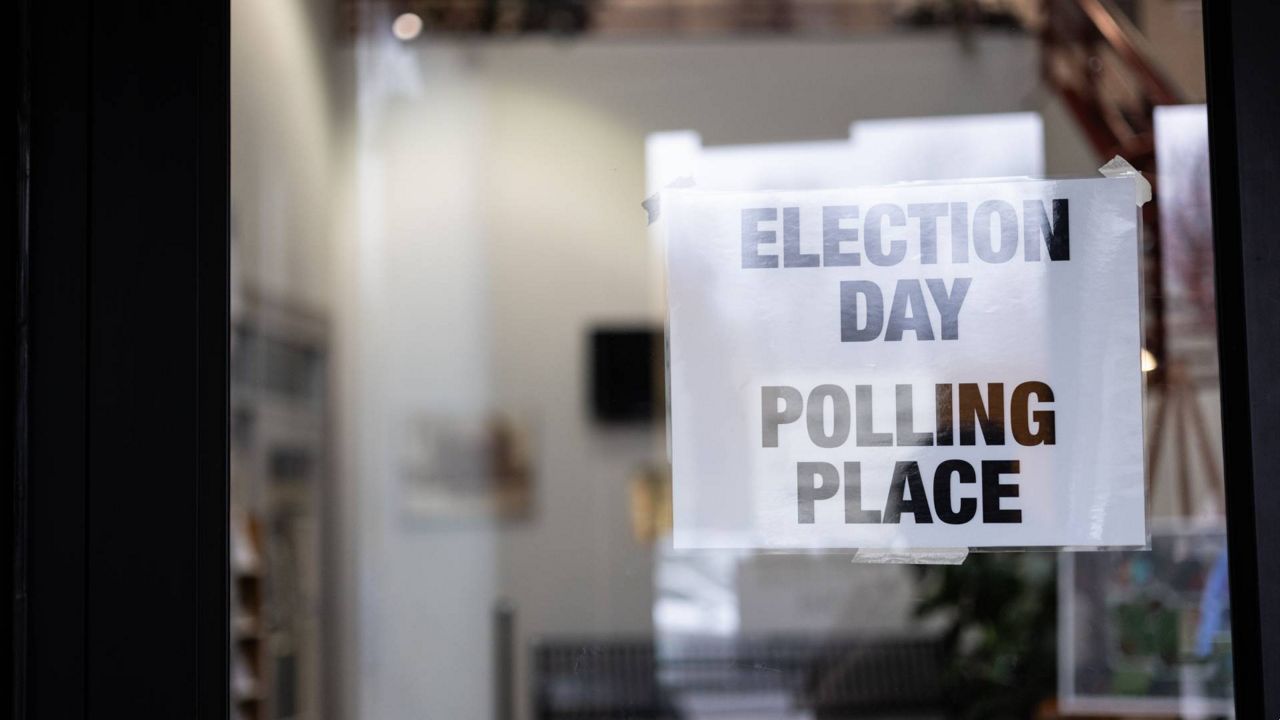New York voters on Tuesday easily approved two constitutional amendments. They kept upstate county executives in office while flipping several mayoral seats. Democrats gained ground in the county holding the state’s fourth largest city while Republicans continued a years-long takeover on Long Island.
Here are a few takeaways from the 2023 election results.
Incumbent county executives win big
The counties home to upstate’s larger cities re-elected their county executives by large margins. While Democratic Albany County Executive Dan McCoy ran unopposed for a fourth term, Democratic Erie County Executive Mark Poloncarz became the first county leader there to win a fourth term, and he did it by 17 points over his Republican opponent.
In Onondaga County, Republican Ryan McMahon secured a second full term by thumping Democrat Bill Kinne by 24 points.
Monroe County Executive Adam Bello, who in 2019 became the first Democrat to win that office in 30 years, not only secured a second term with a 22-point margin over his Republican opponent, but Democrats also took control of the Monroe County Legislature, giving the party total control of county government for the first time in decades.
Inversely, Republicans will have unilateral control of Suffolk County. Republican Ed Romaine won the race to succeed outgoing Democratic County Executive Steve Bellone, the first GOP executive there in 20 years. After Democrats lost the Suffolk County district attorney race and control of the Suffolk County Legislature in 2021, as well as the Nassau County executive, Bellone was one of the last major powerful positions in Democrats’ hands on Long Island, to say nothing of the region’s four congressional seats that Republicans all won in last year’s midterms.
Republicans do well in races for mayor
In the city of Troy, Carmella Mantello won the race to succeed Patrick Madden as mayor. Not only is she the first Republican elected mayor of the Collar City since 2007, she will also be the city’s first female mayor.
In nearby Saratoga Springs, John Safford appears to have unseated Democratic Mayor Ron Kim in a three-way race, making him the first Republican mayor there in 10 years.
In Utica, Republican Michael Galime defeated Democrat Celeste Friend by 31 points, becoming the first Republican to win a mayoral race there since 2003.
In Rome, Jeffrey Lanigan unseated incumbent Jacqueline Izzo after beating her in the Republican primary in June. Izzo in turn ran on the Conservative Party line, but lost to Lanigan by six points.
In a similar case in Geneva, Republican Stephen Valentino, the incumbent Democratic mayor, narrowly leads Jan Regan, who local Democrats chose over Valentino in the primary election.
Some surprises in New York City Council
A big change is coming in the Bronx. Republican Kristy Marmorato is projected by The Associated Press to win over Democratic incumbent Councilor Marjorie Velázquez. Marmorato will be the Bronx’s first Republican elected official at any level of government in 20 years and the Bronx’s first Republican on the City Council since 1983.
Meanwhile, in Brooklyn, Democrat Justin Brannan is projected by Spectrum News and The Associated Press to win over former Democrat and current Republican Ari Kagan, two incumbents who ran against each other as a result of redistricting in a district that now includes a significant number of registered Republican voters. It’s an exception to recent contests in southern Brooklyn that has seen a slight shift to the right.
Constitutional amendments pass with flying colors
New York voters easily approved two new statewide ballot measures. One removes the borrowing limit for school districts in small cities, defined as those with fewer than 125,000 residents. Those school districts can currently borrow just 5% of the total value of the city’s taxable property. In larger school districts, the cap is twice that.
The second amendment makes it easier to construct or repair sewage facilities by exempting those projects from the overall debt limits that apply to local governments. The sewage exception is already in place. It was first passed in 1963, but must be extended every 10 years.
Looking ahead to 2024
It’s difficult to say if any of Tuesday’s local election results can translate to signs of what’s to come a year from now. New York’s Democratic streak at the presidential level is likely to continue, but the state will still have a prominent role at the federal level. U.S. Sen. Kirsten Gillibrand is up for re-election, and both major parties see New York as a crucial path to control of the House of Representatives. Republicans were able to flip four House seats in the Empire State in 2022, nearly the entirety of their current five-seat majority.
There are several variables, however, that will come into play in 2024: the embattled Rep. George Santos’ seemingly constant presence in national headlines, the strong potential for a rematch between Joe Biden and Donald Trump at the top of the ticket and an ongoing legal battle in the state’s highest court over New York’s current House district borders that could very well change by this time next year.
Luke Parsnow - New York State Politics Digital Content Producer
Luke Parsnow is the New York state politics digital content writer and producer at Spectrum News 1. He is an award-winning writer and political columnist and previously worked for CNYCentral in Syracuse and The Post-Star in Glens Falls, New York.






